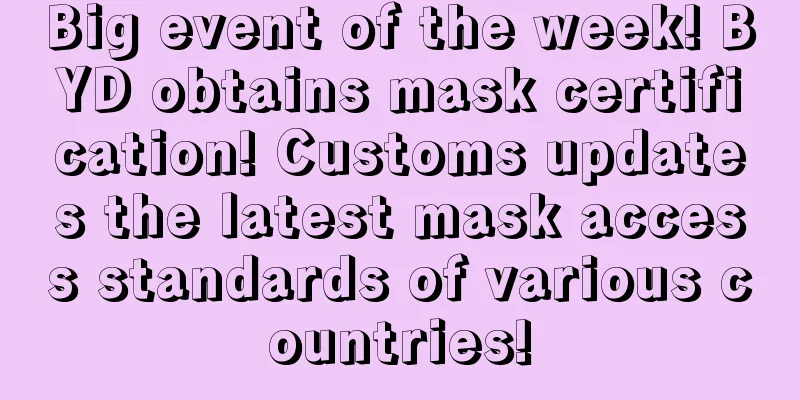What is Amazon's product search algorithm (A9) in 2020? Review of Amazon's product search algorithm (A9) in 2020

|
2020 Amazon A9 Algorithm Amazon’s product search algorithm is completely different from Google’s. When a buyer searches for a product on Amazon, the results will go through two steps. First, they will extract relevant results from the product category, and then rank them according to relevance. The core pillars of the A9 algorithm Amazon has three equally important ranking factors: Conversion Rate — Amazon has found that factors that have an impact on conversion rate include reviews, image quality, and price. It is critical for sellers to keep their prices competitive to maintain a good conversion rate. Relevance — This is the factor that tells the A9 algorithm when to show your product page in search results. To rank higher, your product needs to be highly relevant. Customer satisfaction and retention — Factors that help with customer retention include seller feedback and order defect rate (ODR). The more positive seller feedback and reviews you get, the more likely you are to win more sales. 21 Amazon Product Ranking Factors Here is a list of 21 factors of conversion rate, relevance, and customer satisfaction that the Amazon algorithm considers when ranking your products. 1. Sales ranking Sales rank (also known as Amazon best seller rank) is one of the most important ranking factors. More sales = higher ranking, higher ranking = more sales! 2. review The number of product reviews you receive and the quality of those reviews are important ranking factors. 3. Answered Questions Answered questions are listed at the top of the product page and play an important role in conversions. 4. Image size and quality Sellers should follow Amazon’s image guidelines to ensure that product listings are not suppressed by Amazon. By using high-quality images that are at least 1,000 x 1,000 pixels, you can enable zoom functionality, allowing buyers to view your products in greater detail. 5. Price As one of the most important Buy Box factors, your product price will also have a significant impact on conversion rate and sales. 6. Father and Son Variant By using Amazon’s parent-child variation feature, you can direct customers to a single product page, which helps maximize product reviews. 7. Page dwell time and bounce rate The time a customer spends on your listing will show Amazon the customer's interest in your products. 8. Product listing completeness Your product listing should be as complete as possible. Try to complete every field in the listing setup page. 9. Title A good product name will increase your conversion rate. Optimize your Amazon product title to include keywords, be easy to read, and not exceed 200 characters. 10. Function/five-point description Showing your product features in a five-point description that includes your keywords (as shown below) is a great way to increase conversions. 11. Product Description Use your product description to showcase your product features and add keywords. This is where it’s worth digging in, as great product descriptions will increase your customer engagement and conversion rates. Likewise, a product description that isn’t up to par could mean you lose sales or result in negative feedback. 12. Brand and Manufacturer Model This may be overlooked by many sellers. If conditions permit, you should always include the product brand in the title. This will help buyers search by brand name to find your products. 13. Specifications The specifications section is where you should list the technical and physical details of your product, including dimensions, shipping weight, color, etc. This will help buyers understand the product more clearly and avoid unnecessary returns. Categories and subcategories When setting up your product listing, make sure you choose the most relevant category for your product. Search terms Amazon provides you with five character-limited fields for the search terms you wish to associate with your product. Here are some best practices for keyword suggestions on Amazon: Do not provide inaccurate, misleading or irrelevant information. Do not provide overly long content and respect the limits set for different fields. Don’t provide redundant information that is already captured in other fields, such as title, author, product description, bullet points, brand, etc. When entering multiple words as search terms, please arrange them in the most logical order. Use a single space to separate keywords; no commas, semicolons, or carets are needed. Don't include statements that are only temporarily true, such as "new," "on sale," or "available now." Do not include subjective claims such as amazing or good quality. Do not include common misspellings of product names. Do not provide variations on spacing, punctuation, capitalization, and pluralization. Do not include abusive or offensive words. You can include abbreviations, alternative names, subjects (for books, etc.), and key terms (for books, movies, etc.) as keywords. Customer satisfaction and retention factors feedback All negative feedback will work against you in terms of product search results. Your feedback rating is also an important factor in winning the Buy Box. 17. Order processing speed To be successful on Amazon, you need to ship quickly and accurately. You can also achieve higher rankings with efficient order processing. 18. Inventory Rate Poor inventory management can cause popular products to be out of stock. Amazon prefers sellers who keep a high inventory rate to minimize refunds and pre-sale cancellations. 19. Perfect Order Percentage (POP) Sellers who receive a higher percentage of perfect orders will rank higher than those who experience order issues. 20. Order Defect Rate (ODR) If a customer files a claim against an order, this is considered an order defect. Defects include negative buyer feedback, A-to-Z claims, shipping issues, and chargebacks. Note that if the buyer later removes the feedback, this does not count towards your ODR. Therefore, it pays to try to resolve any issues that may have occurred. 21. Exit Rate Your exit rate is the percentage of times a customer views your listing and then exits Amazon. Products with lower exit rates will rank higher and have higher conversion rates. Summarize To achieve higher product rankings, sellers need to carefully optimize product listings and provide relevant and complete product information to increase product visibility and sales. References |
<<: What is Amazon.WORK? Amazon.WORK Review
>>: What is Alza.cz? Alza.cz Review
Recommend
Accounting for 50% of all new sellers! Chinese sellers are breaking new ground on Walmart
According to the latest data from MarketplacePuls...
USPS lost $1.7 billion in the third quarter, and the package volume decreased by 41 million pieces year-on-year
It is learned that recently, the United States Pos...
The latest trending searches for St. Patrick's Day in the US! Be the first to know about potential hits
It is learned that the United States will usher in...
What is Post Planner? Post Planner Review
Post Planner is a tool that can find and share con...
Amazon and Walmart urgently removed the toys from shelves! The United States will completely ban the sale of such toys!
According to foreign media reports, e-commerce pla...
In 2020, the worst-hit industry is cross-border e-commerce, no doubt about it!
A month ago, the worst-hit industries were the cat...
Awesome! Sales surged 140%. Do you sell these products?
According to foreign media reports, with the outbr...
Growth drivers of the US toy market: the rise of nostalgia, old kids and social media marketing!
According to Insider Intelligence, e-commerce sale...
What is Yayi Intellectual Property? Yayi Intellectual Property Review
Shenzhen Yayi Intellectual Property Agency Co., Lt...
In 2024, the total Christmas e-commerce sales in the United States reached 241.4 billion US dollars, with electronic products having the highest sales
It is learned that recently, the latest data relea...
Soul-searching question: Which is harder, working for Amazon or raising a child?
When talking about mothers, many people will think...
Six tips to help you create beautiful Amazon product videos!
Product videos are a key part of e-commerce sales...
What is Airwallex? Airwallex Review
Airwallex is a comprehensive financial technology ...
Warehouses in many places are overwhelmed, freight costs remain high, and may continue until the third quarter!
The situation of people crossing borders in recent...
The slowest Black Friday? Amazon warehouses continue to be overwhelmed, and out-of-stock becomes the biggest problem!
In a blink of an eye, the first solar term of wint...









